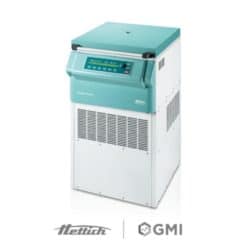Centrifuges
Inside the Lab: Real-World Applications of Ultracentrifugation
Introduction
In the realm of scientific research and laboratory experimentation, the pursuit of knowledge often requires cutting-edge technologies and tools. Ultracentrifugation is one such technique that plays a pivotal role in various scientific fields, enabling researchers to separate and analyze complex mixtures. At GMI, we recognize the significance of ultracentrifugation and its numerous real-world applications in advancing scientific discovery. In this blog post, we will take you inside the lab to explore the practical uses of ultracentrifugation.
re-certified ultracentrifugesWhat is Ultra Centrifugation?
Ultracentrifugation is an advanced separation technique that utilizes high centrifugal forces to separate particles based on size, shape, density, and molecular weight. It is performed using specialized equipment known as ultracentrifuges, which can generate forces thousands of times stronger than the Earth’s gravitational pull.
shop brand new optionsReal-World Applications
- Protein Separation and Purification:
- Ultracentrifugation is instrumental in the purification of proteins. It separates cellular components, isolates specific proteins, and removes unwanted impurities. Researchers can achieve high levels of purity, essential for various studies, including protein structure analysis and drug development.
- Virus Concentration:
- In virology, ultracentrifugation concentrates and purifies viruses from cell cultures or biological samples. This is crucial for studying virus morphology, protein composition, and nucleic acid content.
- Particle Size Analysis:
- Ultracentrifugation is invaluable for particle size analysis in nanotechnology and material science. By subjecting suspensions of nanoparticles to ultracentrifugation, researchers can precisely determine particle size distribution and characterize nanoparticles for various applications, including drug delivery and materials development.
- Isolation of Cellular Organelles:
- Cell biology relies heavily on ultracentrifugation to isolate and study cellular organelles such as mitochondria, nuclei, and ribosomes. This enables scientists to gain insights into cellular functions and structures.
- Density Gradient Separation:
- Density gradient centrifugation is a technique that uses varying densities of solutions to separate components based on their buoyant densities. This is particularly useful for isolating subcellular fractions and separating similar-sized molecules.
- Viral Vector Production:
- Ultracentrifugation is critical in producing viral vectors for gene therapy and vaccine development. It helps concentrate and purify viral vectors, ensuring their safety and efficacy for therapeutic applications.
- Lipoprotein Analysis:
- Researchers in lipid metabolism and cardiovascular disease use ultracentrifugation to separate and analyze lipoproteins in blood samples. This aids in understanding the role of lipoproteins in health and disease.
Conclusion
Ultracentrifugation is a versatile and powerful technique that finds applications in diverse scientific fields. Its ability to separate and purify particles and molecules of varying sizes and densities makes it an essential tool for researchers seeking to unravel the mysteries of the biological, chemical, and physical world.
At GMI, we are committed to providing high-quality ultracentrifuges and related equipment to support scientific endeavors across these various domains. Whether you are involved in protein research, virology, nanotechnology, or any field that demands precision and accuracy in separation, GMI offers cutting-edge solutions to help you achieve your research goals. Explore our range of ultracentrifuges and laboratory equipment at www.gmi-inc.com and advance your research.
contact us





